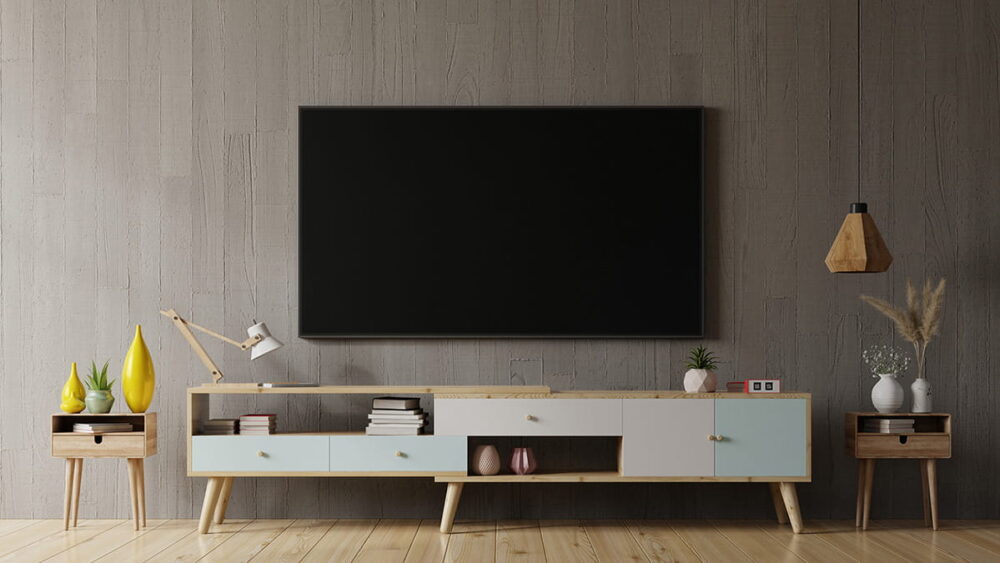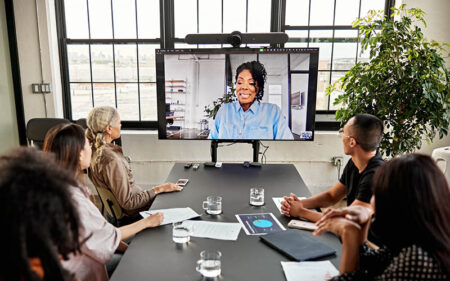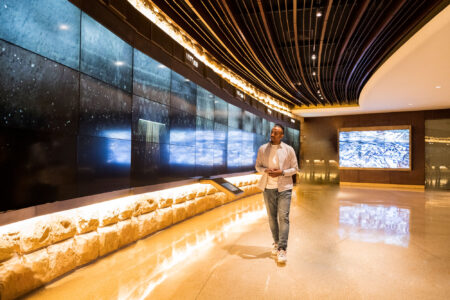May 3, 2021
8K…Remember 8K?

Instead of sitting in crowded aeroplanes, waiting in long lines at McCarren Airport in Las Vegas to catch cabs or Lyft rides, and racing around the Las Vegas and Sands Convention Centers for the better part of four days (walking several tens of miles along the way – no kidding!), we simply sat down at our laptop each morning, logged into a portal, and sat through numerous press conferences and toured virtual booths.

Refreshing an 8K/60 display signal at 60 Hz – one with 8-bit RGB color – requires a signal highway that can support at least 72 (Gb/s) sustained rates.
To be honest, the experience was less than satisfying. It’s one thing to wear out the soles of your shoes trying to find the hidden gems at the show, pushing aside the PR and marketing blitz, and doing some real detective work. But all that effort usually pays off.
Not this time. We could look no further than whatever press releases, still images, and B-roll videos were provided to us by exhibitors. And it was near-impossible to restage ad hoc conversations with booth personnel to find out things that weren’t mentioned in the releases – to dig deeper and find the real news.
Back in the day, televisions were a big part of the CES experience. Some manufacturers used as much as 50% of their booth space to show off their latest innovations in display technology. That was understandable at a time when a premium large-screen television commanded four and five figures. Today? These same manufacturers make much more profit from refrigerators and washer/dryer combos than televisions, which are commodities now.
A quick check this morning on a national CE retailer’s Web site showed a 65-inch 4K LCD TV with high dynamic range support offered for less than $500, while a 75-inch 4K LCD model could be had for $1,000 and an 82-inch 4K LCD TV was ticketed at $1,300. Smaller 4K screen sizes like 43” and 55” clearly fall into the “consumables” category – buy one, use it for a year, and toss it without blinking an eye.

There are a number of reasons why 4K TV prices have collapsed from almost $300 per diagonal inch in 2012 (when they were first introduced) to around $7 – $8/inch today, and we don’t have the time or space to go into them. Suffice it to say that the major TV brands are shifting some of their focus to 8K models in an attempt to recapture some of that lost profit margin…but it doesn’t appear consumers are buying in all that much.
One explanation could be the price differential. While that 1st-tier 65-inch 4K set has a $500 price tag, an 8K 65-inch model is listed at $2,700 (a $500 price reduction, BTW!); five times as expensive. Granted; the 8K model uses quantum dot technology to render HDR images, while the 4K model offers basic HDR support. But that distinction is lost on many buyers who prioritize screen size and price in their purchase decisions.
Another factor could be that most viewers sit no closer than 8-10 feet from their TV screen, and the added pixel resolution can’t be perceived at that distance. To see the physical pixel structure on an 8K TV, you need to be positioned within 18 inches (for 20/20 vision) of the screen. That distance doubles for a 4K set, but who sits 3 feet away from a 65-inch television?
Several new models of 8K TVs were indeed unveiled at the virtual CES, but the difference between the 2021 and 2020 models is incremental. New ways to get more light through LCD panels to your eyes have been devised, including higher-density “mini” LED backlights and more zones for local dimming to improve HDR performance. On the OLED side, most 2021 enhancements have to do with design aesthetics, as this technology has a practical limit to luminance levels. Needless to say; none of these new 8K models will come cheaply.

The real advantage of 8K resolution right now is in acquisition. Movies and TV programs can be filmed in 8K and down-converted to 4K and Full HD for distribution, and in fact will look to have more detail than programs captured in native 4K. But the 4x multiplier in both image pixels and file sizes is a challenge to manage for 8K production: Consider that a single 8K video frame has 33 million pixels compared to the 8.8 million pixels contained in a 4K video frame, and you’ll see the problems in moving those pixels at a 60 Hz frame rate.
The differences between televisions and display monitors are insignificant these days, mostly found in the number and types of interfaces and the design of power supplies, mounts, and bezels. The AV industry started moving to 4K displays a few years ago as production of FHD models was declining. Signal switching and distribution for these products isn’t that much of a challenge, given the preponderance of HDMI 2.0 and DisplayPort 1.2 interfaces and signal management products that support them.
It’s not quite that simple with 8K. Refreshing an 8K/60 display signal at 60 Hz – one with 8-bit RGB color – requires a signal highway that can support at least 72 gigabits per second (Gb/s) sustained rates. That’s four HDMI 2.0 connections running simultaneously! And, although we’re seeing increased support for the faster HDMI 2.1 standard in the CE world, it’s going to have a much slower path to adoption in commercial AV applications…and it’s still not fast enough for the 8K/60 4:4:4 example just cited.
Given that proponents of 8K video have permanently linked high dynamic range to the format, it’s almost pointless to try and calculate an 8K signal variant that we can stuff through an HDMI 2.0 port. (For those playing at home, 8K/24 and 8K/30 with 8-bit 4:2:0 color will make it under the bar at 17.82 Gb/s, and that’s it. No support for HDR, though.) To achieve 8K resolution, it’s a far simpler task to tile and interface four 4K-resolution displays.
As far as moving 8K video through an IT network switch goes; it can be done using a mezzanine-level codec like JPEG XS and has been successfully demonstrated by the Japanese TV network NHK. Using 5:1 JPEG-XS compression, an 8K/60 10-bit 4:2:2 video signal cruises through a 10Gig switch @ 9.5 Gb/s. However, we still need to convert it to a display format at the final connection, once again using multiple HDMI or DisplayPort interfaces.
Summing up; it’s going to be a while yet before our industry will consider 8K video and display an ‘everyday’ product, one that warrants much of our energy and money to support. And 8K will remain a more exotic format for some time, due to a combination of financial and technical limitations. For now, 4K is established, affordable, and far less complex to switch and distribute in an AV system.
But check back next year…you never know…
Would you like to consult with Kramer?








